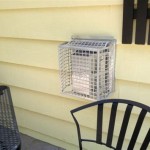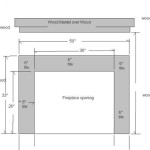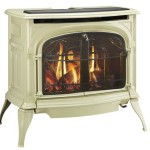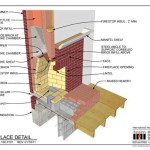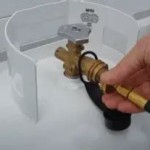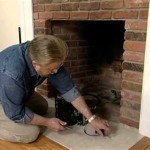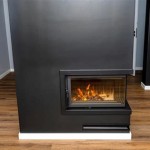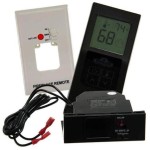Removing Fireplace Doors: A Comprehensive Guide
Fireplace doors are often installed to enhance aesthetics, improve energy efficiency, and provide a safety barrier against sparks and embers. Over time, however, they may become damaged, outdated, or simply unwanted. This article provides a comprehensive guide to safely and effectively removing fireplace doors, covering the necessary tools, step-by-step instructions, and potential challenges.
Understanding Fireplace Door Types and Attachment Methods
The first step in removing fireplace doors is identifying the type and attachment method. Fireplace doors are generally categorized based on their frame design and how they are secured to the fireplace opening. Common types include overlap doors, which sit on the outer surface of the firebox, and insert doors, which fit within the firebox opening. The attachment methods vary, often involving screws, bolts, spring-loaded mechanisms, or a combination thereof. Careful examination of the door frame and its contact points with the fireplace will reveal the specific type and attachment method present.
Overlap doors frequently use mounting brackets attached to the face of the fireplace. These brackets can be screwed directly into the brick or masonry, or they may be secured with masonry anchors. Other overlap systems might use a tensioning mechanism with springs that press against the brick to hold the door in place. Insert doors, on the other hand, generally have a frame that fits snugly within the fireplace opening. They are often secured with screws that tighten against the inner walls of the firebox or may utilize a system of clamps that grip the brickwork.
Recognizing the type of door and its attachment mechanism is crucial for selecting the appropriate tools and developing a safe and efficient removal strategy. Attempting to force a door without understanding its structure can cause damage to the fireplace, the door itself, or potentially result in personal injury.
Essential Tools and Safety Precautions
Prior to embarking on the removal process, assembling the necessary tools and implementing appropriate safety measures is paramount. A basic toolkit should include a screwdriver set (both Phillips head and flathead), a socket wrench set, a measuring tape, a level, a putty knife or scraper, and safety glasses. A drill with various bits, including masonry bits, may be required depending on the door’s attachment method.
Safety glasses are essential to protect the eyes from debris and dust. Gloves should also be worn to protect the hands from sharp edges and potential contaminants. If the fireplace has been recently used, ensure it has cooled completely before beginning work. Consider using a drop cloth or protective sheeting to cover the surrounding area and minimize dust and debris spreading.
In addition to personal protective equipment, it's also prudent to have a stable ladder or step stool available if the fireplace opening is elevated. Ensure the ladder is properly positioned and secured before climbing. If the door is particularly heavy, assistance from another person is recommended to prevent accidental drops or injuries.
Furthermore, consider the potential for asbestos exposure, particularly in older homes. If there is any suspicion that asbestos-containing materials are present in the fireplace construction, it is imperative to consult a qualified asbestos abatement professional before proceeding with any removal work. Disturbing asbestos can release harmful fibers into the air, posing a significant health risk.
Step-by-Step Door Removal Process
The removal process varies depending on the type of fireplace door and its attachment method. However, the following general steps provide a framework for most situations.
Step 1: Initial Assessment and Preparation. Before commencing the removal, carefully examine the fireplace door and its surrounding area. Identify all screws, bolts, brackets, or other fasteners securing the door to the fireplace. Take photographs of the installation to aid in reassembly if desired. As mentioned before, protect the surrounding area with a drop cloth or sheeting.
Step 2: Removal of Fasteners. Using the appropriate screwdriver or socket wrench, carefully remove all visible screws or bolts. If the screws are rusted or difficult to remove, penetrating oil can be applied to loosen them. Allow the oil to soak for several minutes before attempting to unscrew them again. Avoid applying excessive force, as this can strip the screw heads or break the bolts. If a screw head is stripped, consider using a screw extractor tool.
Step 3: Disconnecting Spring-Loaded Mechanisms. If the door utilizes a spring-loaded tensioning system, carefully release the tension before attempting to remove the door. This usually involves compressing the springs and disengaging them from their mounting points. Use caution when handling springs, as they can snap back with considerable force. In some cases, specialized tools may be required to compress or release the springs safely.
Step 4: Removing Mounting Brackets. Once the fasteners are removed, the mounting brackets may still be attached to the fireplace. If they are screwed into the brick or masonry, use a screwdriver or drill to remove the screws. If they are secured with masonry anchors, a hammer and punch may be necessary to drive the anchors further into the wall before attempting to pull the brackets free. Exercise care to avoid damaging the surrounding brickwork.
Step 5: Detaching the Door Frame. With all fasteners and mounting brackets removed, carefully detach the door frame from the fireplace opening. If the frame is stuck, a putty knife or scraper can be used to gently pry it loose. Insert the knife between the frame and the fireplace, and carefully work around the perimeter to break any seal or adhesion. If the door is heavy, enlist assistance from another person to support the weight and prevent it from falling. Lift and remove the door frame carefully.
Step 6: Cleaning and Inspection. After removing the door, thoroughly clean the fireplace opening and surrounding area. Remove any remaining debris, dust, or adhesive residue. Inspect the fireplace for any damage or structural issues that may require repair. If the door is to be reinstalled later, carefully store it in a safe and dry place to prevent damage.
Addressing Potential Challenges and Troubleshooting
Removing fireplace doors can present several challenges, requiring patience and problem-solving skills. One common issue is rusted or seized fasteners. As previously mentioned, penetrating oil can often loosen rusted screws. However, if the screws are severely corroded, it may be necessary to use a screw extractor tool or even drill them out completely. When drilling out screws, use caution to avoid damaging the surrounding material.
Another potential challenge is dealing with stubborn adhesive or sealant. If the door frame is heavily sealed to the fireplace, use a heat gun or hair dryer to soften the adhesive before attempting to pry it loose. Be careful not to overheat the adhesive, as this could damage the surrounding surfaces. A specialized adhesive remover can also be used to dissolve the sealant.
Occasionally, the fireplace opening may be uneven or out of square, making it difficult to remove the door frame. If the frame is binding against the opening, use a level to identify the areas causing the obstruction. A rubber mallet can be used to gently tap the frame and dislodge it. Avoid using excessive force, as this could crack or damage the brickwork.
In cases where the door has been permanently installed or is severely damaged, professional assistance may be required. A qualified fireplace technician or contractor can safely remove the door and repair any damage to the fireplace. They can also provide advice on replacement options and ensure proper installation.
Disposal and Recycling Options
After removing the fireplace doors, consider the disposal and recycling options. If the doors are in good condition, they can be sold or donated for reuse. Online marketplaces and local charities are good options for finding potential buyers or recipients. If the doors are damaged beyond repair, they can be recycled at a local metal recycling facility. Metal recycling helps conserve natural resources and reduces landfill waste.
Before disposing of the doors, separate any different materials, such as glass, metal, and gaskets. Glass can often be recycled separately at specialized recycling centers. Gaskets and other non-recyclable components should be disposed of properly in accordance with local regulations.
By carefully considering the disposal and recycling options, responsible environmental stewardship can be practiced. Recycling or reusing fireplace doors not only prevents waste but also contributes to a more sustainable future.

How To Remove Fireplace Doors And Frame

How To Remove An Old Fireplace Surround Merrypad

How To Remove Fireplace Doors And Frame Cleaning Painted Walls Deep Tips

How To Remove An Old Fireplace Surround Merrypad

How To Remove Fireplace Doors And Frame

How To Remove Fireplace Doors And Frame

How To Remove Fireplace Doors And Frame

How To Remove And Clean Glass Fireplace Doors

Glass Door Removal Cleaning Regency Horizon Hzi390 Hzi540

How To Remove Fireplace Mesh Curtain Diy Door Replacement
Related Posts

